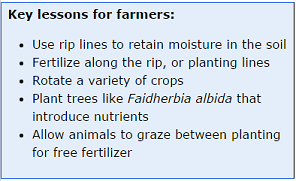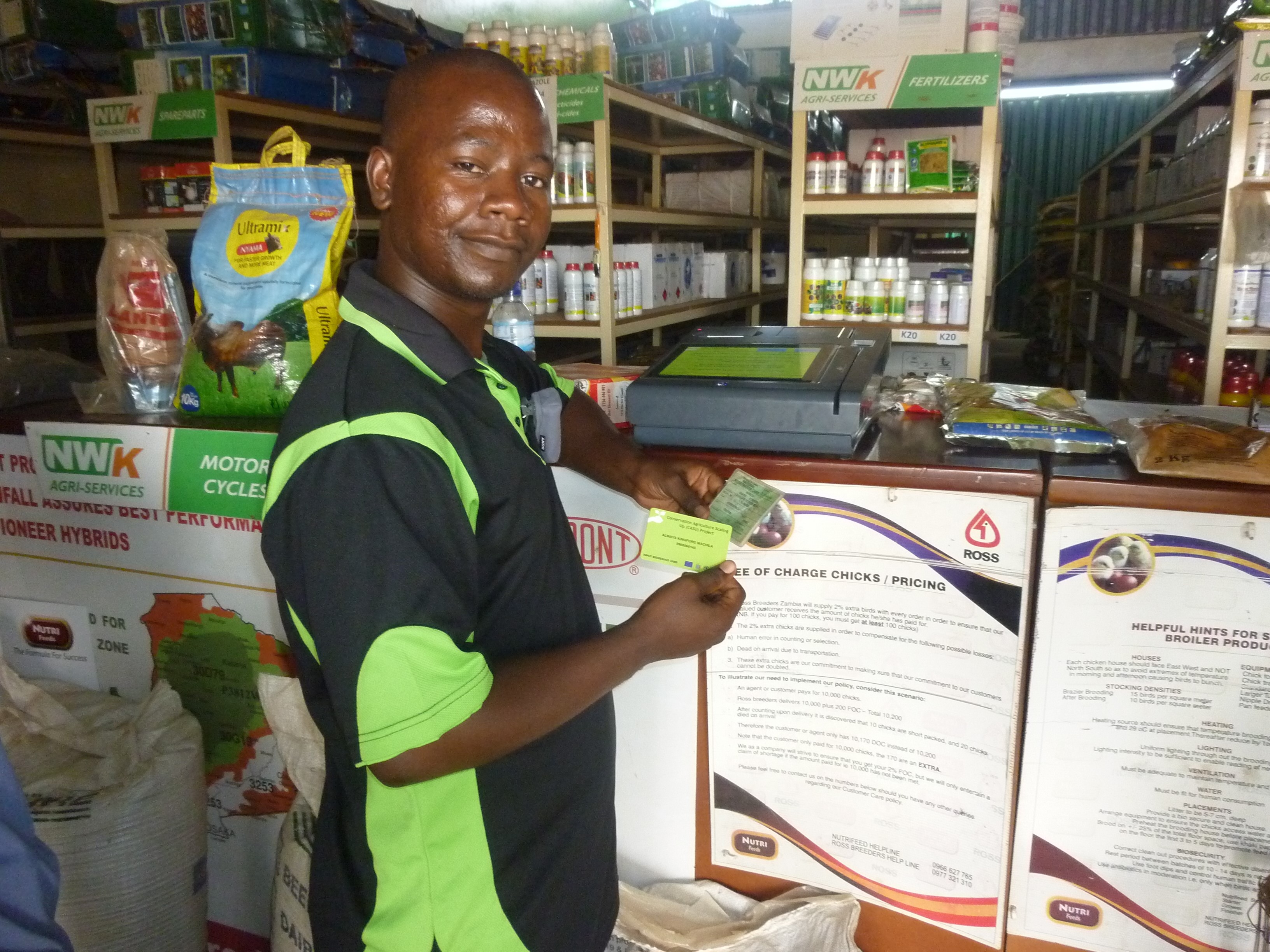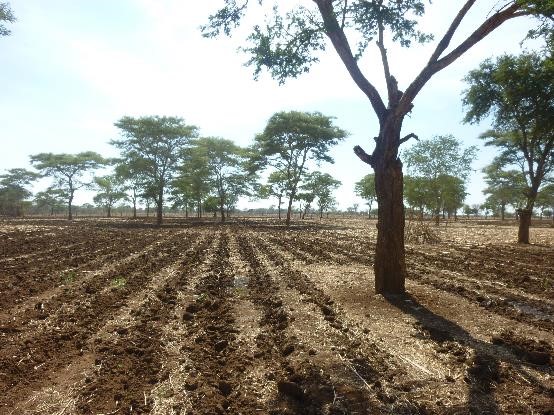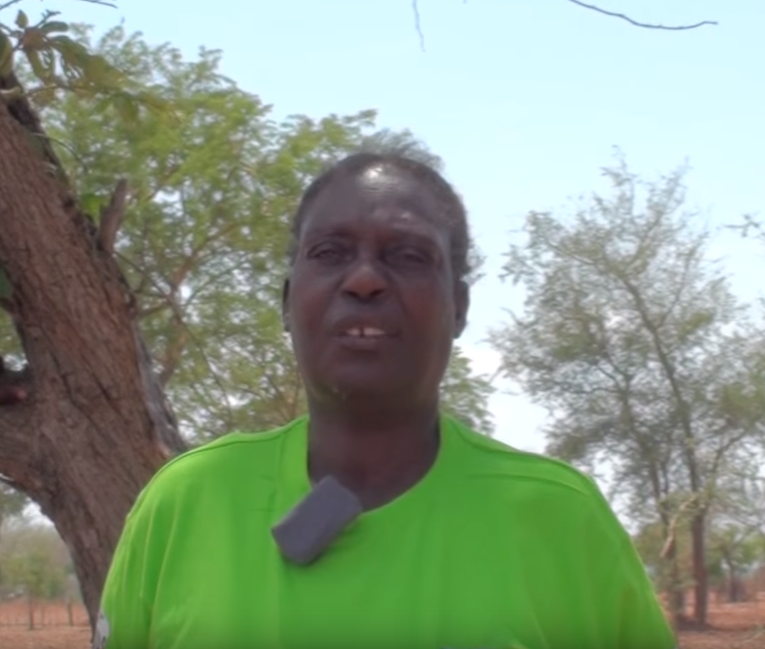A team of oxen draws a plough over the red earth of the Zambian countryside cutting a neat line under the traditional practices of the past that in this village are being replaced by conservation agriculture, benefitting small-scale farmers.
Here in Monze District, some 200km southwest of the capital Lusaka, new conservation agriculture techniques that are low-tech and relatively easy to implement help to lock moisture and nutrients in the ground naturally, to deliver better yields.
As part of the same project, farmers are being encouraged to plant a wider array of crops, advancing efforts to diversify the foods people grow and eat in a country blighted by chronic malnutrition.
One of the yield-boosting methods being introduced by conservation agriculture is the use of deep rip lines instead of conventional ploughing, to prepare the soil for planting. By not tearing up all the earth, moisture is better retained even when rains are poor and fewer fertilizers are needed as they focus in areas where it’s needed most.
Farmers are reaping the results of their hard work and are keen to learn more ways to improve their agricultural practices.

“We are able to feed ourselves and sell a little [of what we produce]. Some have saved up and bought an animal here and there,” said Charles Lindyanga, who is keen to learn more ways he and his neighbours can increase their yield. “We are willing and wishing to hear if there are any ways we can improve things further.”
The initiative, Conservation Agriculture Scaling Up (CASU), is a four year project funded through the 10th European Development Fund (EDF) at a total cost of €11 million, implemented by the United Nation’s Food and Agriculture Organization and the Zambian Ministry of Agriculture. This project builds on gains made by previous EU supported activities in Zambia. Between 2009 and 2012, FAO implemented the Farmer Input Support Response Initiative, with a contribution of €16.9 million from the EU.
The aim is to increase the number of farmers adopting conservation agriculture across 31 districts in Zambia and the chosen route is peer-to-peer learning.
Mr Lindyanga is a ‘follower farmer’. That means that he is learning conservation agriculture techniques from an experienced ‘lead farmer’ who is being supported through the programme. In time, many follower farmers like Mr Lindyanga could take lead roles and teach others in the community the simple methods that have seen yields rise here even as climate change makes rainy seasons less easy to predict.
“Almost 250,000 farmers already directly benefited from the project,” said Sarah Gomah Likota, Monze District Senior Agriculture Officer. She has no doubt that the target of 21,000 lead farmers providing p2p training to 315,000 follow farmers across the four-year life of the project will be surpassed. “A lot of other farmers who are not on the programme have taken conservation agriculture up,” she said. “It is a success story and the only answer we have to climate change.”
Some 67% of the Zambian population is dependent on agriculture and its producers are under numerous pressures. Climate change is making the annual rainy seasons less and less reliable and many farmers have seen their crops fail using traditional farming practices. At the same time, the Zambian population is growing by 3% year on year, increasing demand for domestically produced food.
As well as increasing production, Zambia, like many countries in this part of southern Africa, needs to diversify its agricultural base away from the staple crop, maize. In most parts of Zambia maize is relatively easy to grow and its production was encouraged and subsidized by previous governments. But a diet packed with maize is not a healthy diet and lacks vital nutrients.
According to the United Nations agency for children, UNICEF, some 40 percent of Zambian children are stunted – they have a low height for their age. Stunting is directly related to poor diet and nutrition. Conservation agriculture, with its focus on producing varied crops in rotation, is expected to increase dietary diversification. However, willingness to grow legumes in rotation is limited and determined by price and access to seeds and markets. Moreover, dietary diversification also implies a change of eating patterns.
In a visit to the agro-dealer, farmers pick up their free agricultural goods, courtesy of the CASU project.
One of the components of the CASU programme is locking in this drive to diversification. An e-voucher system enables lead farmers to redeem inputs like seeds, herbicides or protective workwear in return for their mentorship, encouraging them to try new crops and improved methods. They get inputs thanks to an electronic card that can be read at terminals housed by agro-dealers partnering with the project.
It’s a system that is winning approval beyond the scope of the project. The farmers appreciate having the choice within a wide range of quality agricultural goods. Through the e-voucher system, farmers receive legumes seeds like soya beans, grown to rotate crops and diversify their production. However, because of economic considerations such as access to the market and risks, some farmers are still reluctant to produce legumes instead of maize.
The government and district authorities have not had to push hard to encourage take up of the programme. News about the many benefits of the Conservation Agriculture Scaling Up project is spreading fast and farmers are coming to her offices demanding training, according to Mrs Gomah Likota.
“Experience is the best teacher. The farmers have seen that only those who are doing conservation agriculture have food,” said Mrs. Gomah Likota, talking about areas of low precipitation and high rainfall variability. “Most of the people using the conventional ways, they don’t have food.”
Although some farmers are very optimistic about conservation agriculture, recent studies show that its adoption at country level is still low. Key constraints faced by farmers willing to apply conservation agriculture are increased labour and input cost, limited access to quality legume seeds, higher economic risk combined with limited increased net gain, economically unrealistic lending interest rates that negatively affect mechanization needed to reduce labour, and limited access to crop markets other than maize.
The CASU project and other cooperating partners supporting conservation agriculture in Zambia have already taken action to mitigate these constraints to increase conservation agriculture’s adoption rate. In the 2015/16 season, 500 CASU farmers accessed credit for agricultural inputs and weather-indexed insurance and 33 farmer cooperatives signed forward delivery contracts for marketing their produce. In the coming season, CASU will test local seed multiplication systems, innovative private sector mechanization business models as well as affordable private sector lending schemes to help farmers upgrade their equipment. The CASU project is convinced that once pending limitations have been fully resolved, this sustainable crop farming technique will fully benefit Zambia's population.
|
Testimonial: Christine Mweene, follower farmer, Monze District "We have seen that Conservation Agriculture is the most effective way of farming – better than the ways we would use in the past.
You can have a very good harvest even with very little rainfall. The rip lines keep moisture and water. It takes a long time before [the soil] dries up. You find that where there is no rip lines, there is no water at all. I’ve been doing Conservation Agriculture for three years now. I have 14 hectares of land but I cultivate only 3 hectares – the rest I use for my animals to graze. In these three hectares I grow maize, cotton, sweet potatoes. I have kids that go to school – one of them completed his secondary education through [income I gained from] Conservation Agriculture. [I have managed this though] I am a widow – my husband passed some time back." Hear more from Christine Mweene in her video testimony here. |
Further reading:
- Project: Farmer Input Support Response Initiative to rising prices of agricultural commodities in Zambia
- Conservation agriculture (FAO)
This collaborative piece was drafted by Sarah Simpson, with support from the capacity4dev.eu Coordination Team.
Image credits: Raymond Lataste









Log in with your EU Login account to post or comment on the platform.